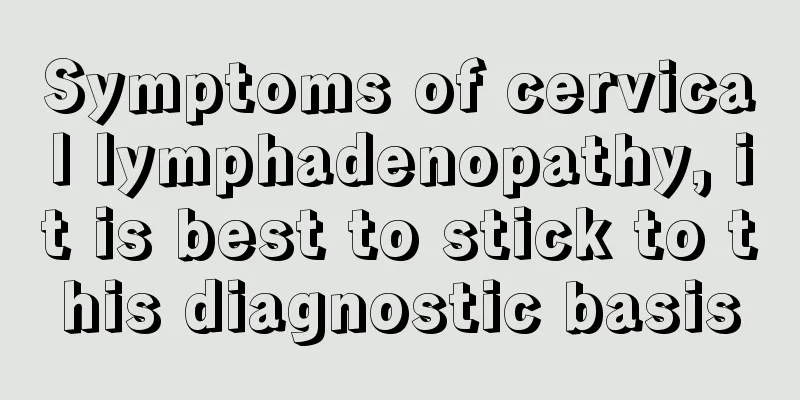What is Hashimoto's thyroiditis

|
Hashimoto's thyroiditis is actually a chronic lymphatic autoimmune disease. The population that suffers from this disease is relatively targeted. From the existing clinical data, we can know that the probability of developing the disease in middle-aged women is higher. Hashimoto's thyroiditis is usually accompanied by hyperthyroidism. The surface of the thyroid gland will become enlarged and rough, and there will be brown-yellow mucus. The patient will also experience local discomfort or even pain. Hashimoto's thyroiditis, also known as chronic lymphocytic thyroiditis, is an autoimmune disease. The thyroid gland often shows moderate diffuse lymphocytic infiltration, with lymphoid follicle formation, plasma cell infiltration and thyroid follicle rupture. Some follicular cells appear enlarged and eosinophilic, the so-called "Askanazy cells". Some patients may have myxedema, their thyroid gland is smaller or even cannot be touched, and the histological changes of the thyroid gland are similar to those mentioned above, but the fibrosis becomes more obvious and the cell infiltration decreases. Chronic lymphocytic thyroiditis is more common in middle-aged people, but it can affect any age group. The incidence rate in women is significantly higher than that in men, about 20:1. The onset is insidious and slow. The thyroid enlargement is often discovered accidentally and is of medium size. A few patients may have local discomfort or even pain, which can be easily confused with subacute thyroiditis. Most goiters are symmetrical, with enlargement of the pyramidal lobes. The surface of the gland may be lobed and tough like rubber. The thyroid function is mostly normal, but some patients may have hyperthyroidism, which is seen in young patients and is called Hashimoto's hyperthyroidism. Hypothyroidism may occur in the later stage, and a few may present with myxedema. Chronic lymphocytic thyroiditis mainly presents as diffuse enlargement with a smooth surface in adolescents. In middle-aged patients, the thyroid gland is mostly only moderately enlarged, of medium hardness, uneven, and with an uneven surface. TGA and TMA are significantly elevated. In a small number of patients, the thyroid gland is hard in texture and difficult to distinguish from thyroid cancer or medullary thyroid cancer. Middle-aged women with diffuse thyroid enlargement, especially when accompanied by pyramidal lobe enlargement, should be suspected of this disease regardless of thyroid function. Further determination of TMA and TGA can assist in diagnosis. Potassium perchlorate excretion test is of reference value. Thyroid puncture and histological examination can confirm the diagnosis. Thyroid hormone test can also be used for treatment. 80 to 160 mg of thyroid tablets can be given daily. If the thyroid gland is significantly reduced, it will help with diagnosis. When diagnosing this disease, care should be taken to differentiate it from patients with thyroid diseases such as thyroid cancer, subacute thyroiditis, simple goiter and nodular goiter. |
<<: How to clean the black bottom of a toothbrush
>>: Can I eat walnuts when I have thyroid nodules?
Recommend
How much does it cost to treat melanoma
How much does it cost to treat melanoma? This is ...
What harm does liver cancer do to people
Liver cancer is one of the most common diseases n...
How to use the essence
We may often see essence in our lives. It is a su...
What is the cause of snake gallbladder sore and what are the symptoms
Snake gall bladder sore is a skin disease caused ...
What are some self-treatment methods for depression?
Depression is a psychological disease. For most p...
What are the authoritative hospitals for osteosarcoma
Treatment of osteosarcoma is a matter of great co...
The difference between peripheral blood and venous blood
Peripheral blood refers to finger blood and earlo...
How much does it cost to treat lung cancer
The specific treatment cost of lung cancer can be...
Slow heart rate and nausea
Heart rate is a very important indicator for peop...
What should we do when we have cervical precancerous lesions? How should we treat cervical precancerous lesions?
Since we started school, we have learned a phrase...
Beware of hypoglycemia symptoms in liver cancer patients
A small number of liver cancer patients will expe...
What should I do if my throat is itchy and I always want to cough
Having an itchy throat and always wanting to coug...
How to clean the yellow crotch of underwear?
In daily life, many women have encountered this p...
The personality of people who like darkness
Everyone has a different personality and likes di...
What to do if gums swell after tooth extraction
In today's life, many people have bad eating ...









